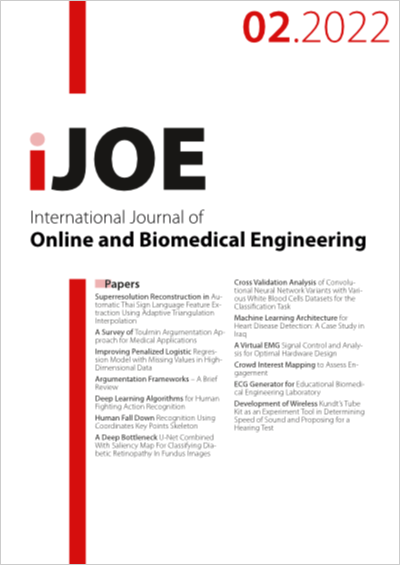A Virtual EMG Signal Control and Analysis for Optimal Hardware Design
DOI:
https://doi.org/10.3991/ijoe.v18i02.27047Abstract
Background: A muscle-computer interface is one of the new applications of the human-computer interface technologies and specifically the brain-computer interface. Brain-muscle-computer interface based on the Electromyography (EMG) signal. EMG signal is an electrical activity from a muscle that is used as an input for effecting several tasks.
Objective: This work presented an interfacing process between the Graphical User Interface (GUI) and hardware system. Using the implemented system, the researcher shall deals with the raw EMG data easily by analyzing the signal from the muscle sensor detection.
Material and Methods: A novel virtual EMG signal control and analysis system design is proposed in this work. The system consists mainly of two parts, hardware and software toolbox. Hardware design is mainly dependent on using a muscle movement sensor as well as the feedback from the virtual toolbox. The virtual software design offers a relatively simple design of a friendly graphical user interface. It consists mainly of the input EMG signal and output signal after using different processing methods. Feedback response from the final EMG signal results after the processing may help the designer to present the optimal hardware design.
Results: The output results show the output performance of the proposed virtual EMG data controlling and analysis with the implemented hardware design of the muscle sensor movement detection. The results show promise that these interfaces may provide a new option to benefit the designer in choosing the optimal prosthesis design of severely disabled persons.
Downloads
Published
How to Cite
Issue
Section
License
Copyright (c) 2022 Hadeel K. Aljobouri

This work is licensed under a Creative Commons Attribution 4.0 International License.



